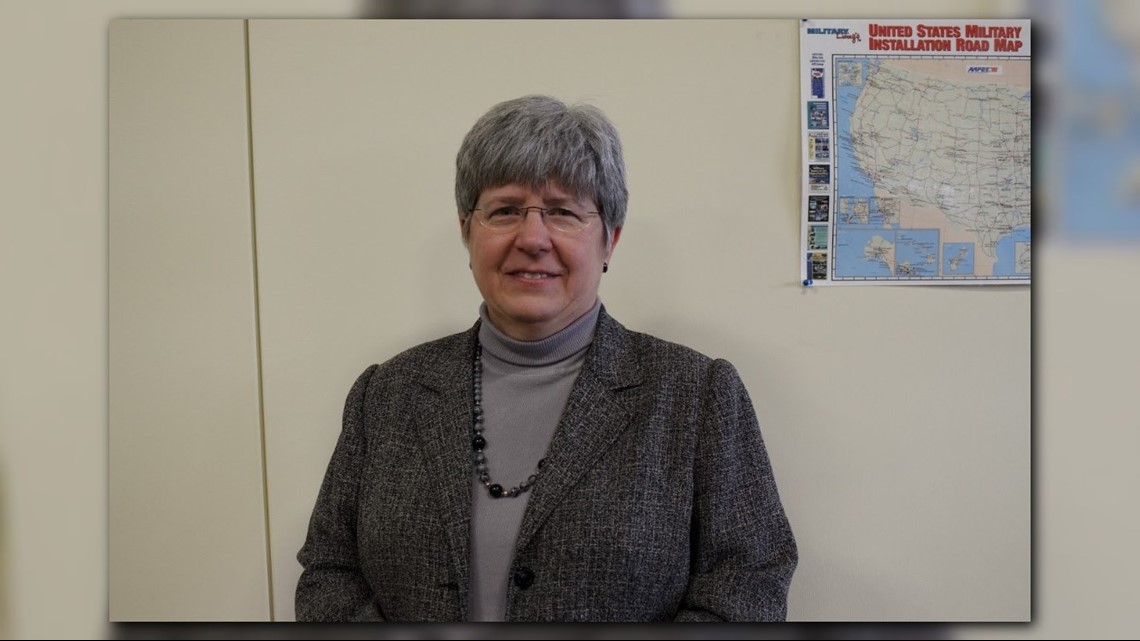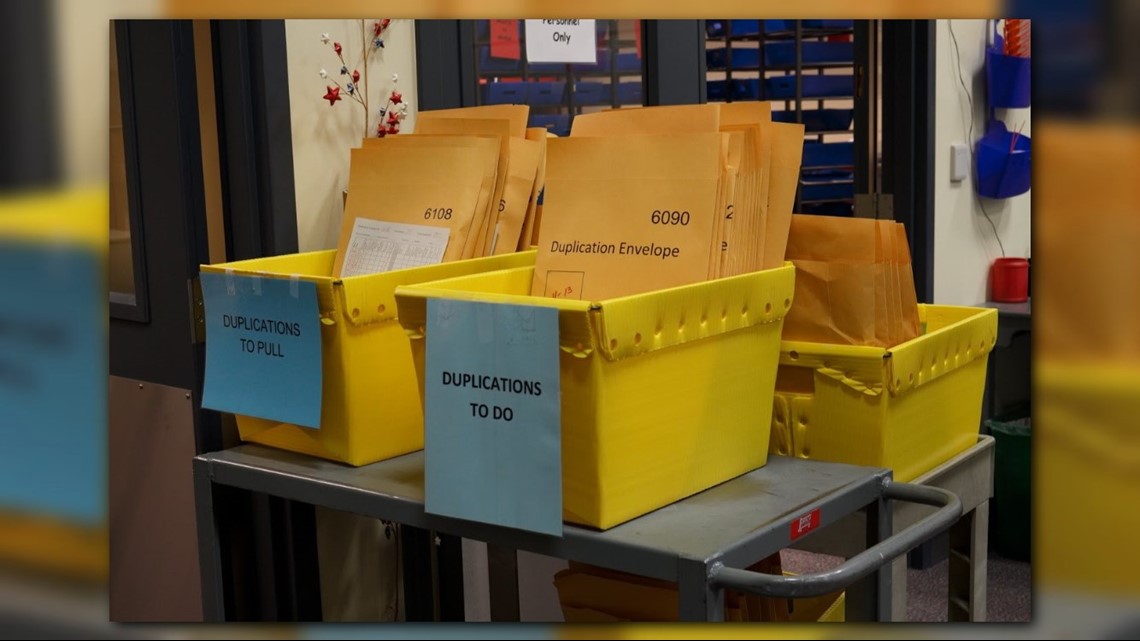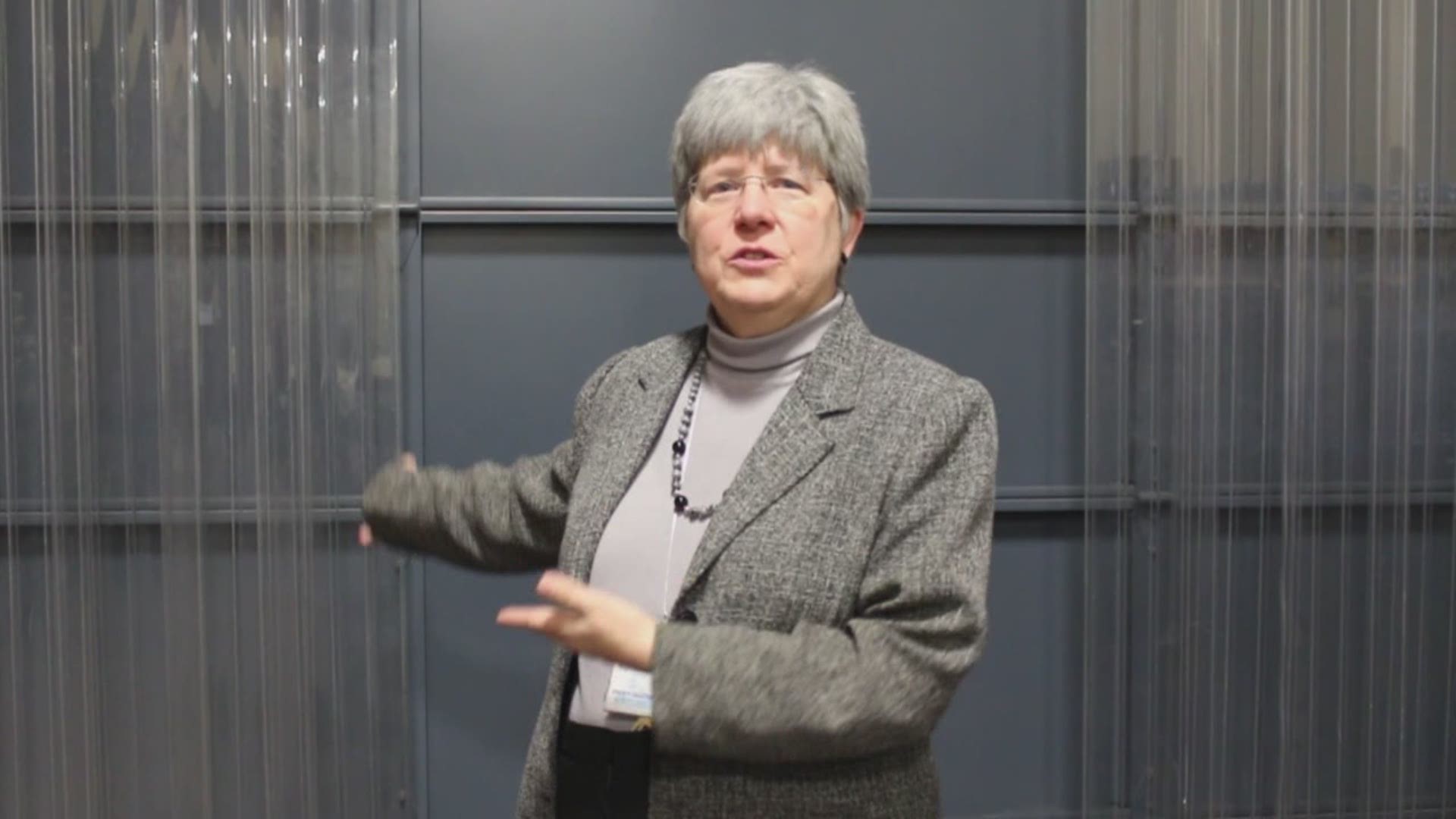SPOKANE, Wash. — This year’s midterm elections may have happened on Tuesday, Nov. 6 but staff at the Spokane County Elections Office are still working hard to process ballots.
All ballots must be certified by Tuesday, Nov. 27, according to Spokane County Auditor Vicky Dalton. Certification is the final vote count where the all ballots will be processed.
“The reason we have so much time between Election Day and certification day is because there are so many activities,” Dalton said.


Since Washington is a vote-by-mail state, this means the Elections Office continues to receive, inspect and tabulate valid ballots after Election Day.
Votes that are counted on Election Day are those that have already been coming in for about three weeks, Dalton said. On that night, the Elections Office has received about 45 to 50 percent of the ballots that will be counted.
There are several parts to the certification process after Election Day. That includes processing ballots, verifying or purging ballots with missing or mismatched signatures, and creating duplicate ballots for damaged ballots.
Ballots are processed in batches via a sorter that sprays a sequence number and date on the ballot before a camera captures the ballot’s barcode and signature, which are verified on a screen. Each batch contains up to 200 ballots, which are brought through the sorter for a second pass to see if the ballot is accepted or not.
If you forgot to sign your ballot envelope, you will receive a letter and phone call from the Elections Office, Dalton said.
“We try to give voters every opportunity to fix whatever the problem may be to get their ballot counted,” Dalton said.
If there is something on your ballot that prevents it from being counted – such as poor handwriting, a rip or tear, coffee stains, pizza grease or marks on the ballot that will provide a wrong read to the machine – all votes are moved from the voter’s original ballot to a fresh ballot. If you mark one answer and cross it out before marking a different answer, this is counted as an “overvote” and the ballot will need to be duplicated.
This process is done by a team of two and takes about three minutes per ballot, Dalton said. There are about 20,000 ballots in need of duplication this year.


Dalton wants to reminder voters they do not have to mark every race. The lack of response will simply be counted as what the Elections Office calls an “undervote.”
Another question many people may have: What happens if media organizations call races on Election Day but the results change once ballots are certified? Dalton said this has happened before.
"In 2006, there were several Democratic candidates leading on Election Day but a Republican candidate won by the end of the certification process. In this case, there was a 5 percent swing statewide,” she said.
“Other institutions can project results however they want, but in reality it’s the Elections Office that certifies who won the race or the issue,” Dalton said.
About 140 seasonal or temporary employees work in the Elections Office, Dalton said. Many are retired postal employees attuned to the flow of envelopes and attention to detail.
Dalton said staff’s main goal is to make sure every eligible voter can vote and have the confidence to know their vote will be counted in the way they identified it on their ballot.
“We could be fast and just shove ballots in and not worry about whether that’s really from the voter or not and get the results out right after Election Day…or we could do it right,” Dalton said.
“We have to be even more accurate than a bank. The expectation is to make absolutely no mistakes and that’s what we strive for,” she continued.

